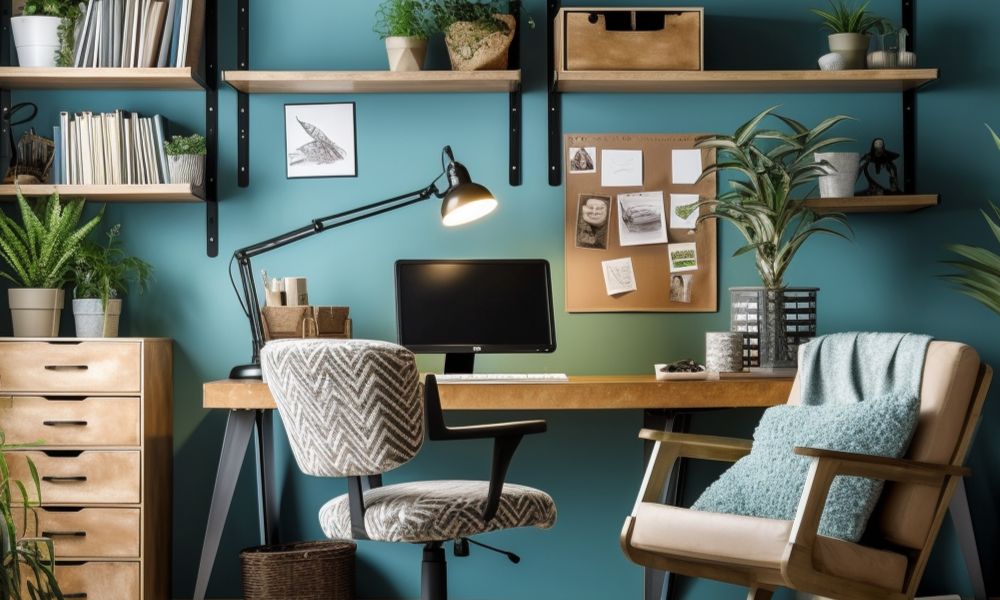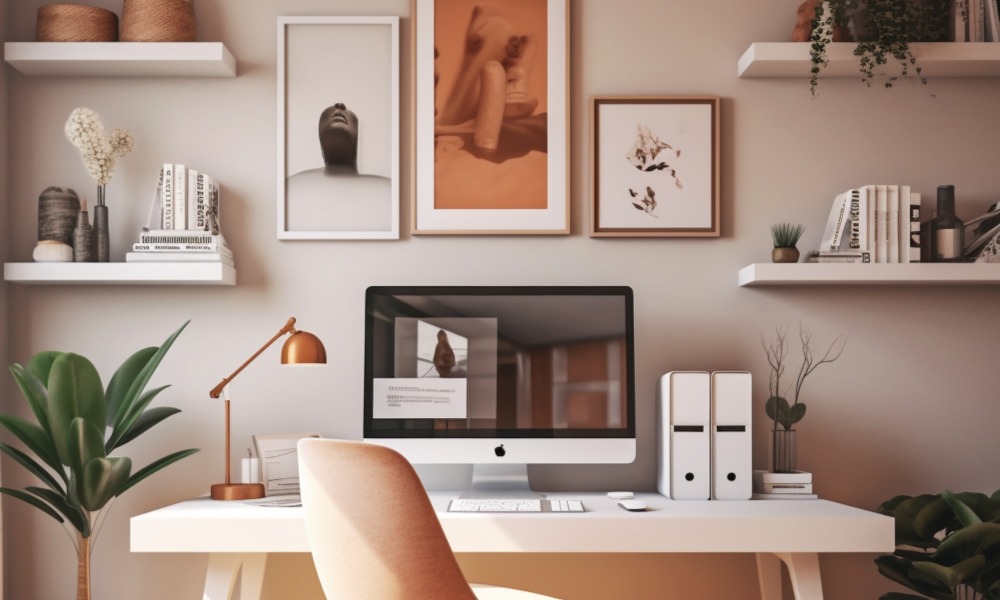As more people embrace remote work and flexible schedules, having a functional home office has become essential. Designing a space that is both aesthetically pleasing and conducive to productivity is key to establishing a productive work environment. Whether you have a dedicated room or a small corner, here are some design and organization tips to help you create a functional home office:
- Choose the Right Location:
- Dedicated Space: If possible, designate a separate area solely for work purposes. This helps create a clear boundary between work and personal life, allowing for better focus and concentration.
- Natural Light: Opt for a space with abundant natural light, as it promotes productivity and boosts mood. Position your desk near a window to take advantage of natural lighting during the day.
- Ergonomic Setup:
- Comfortable Chair and Desk: Invest in an ergonomic chair and a desk that suits your height and work requirements. A chair with proper lumbar support and an adjustable desk that allows you to maintain a comfortable posture are crucial for long hours of work.
- Monitor Placement: Position your computer monitor at eye level to reduce strain on your neck and eyes. Consider using a monitor stand or an adjustable arm to achieve the optimal height.
- Design for Productivity:
- Decluttered Space: Keep your workspace clutter-free and organized. Minimize distractions by only keeping essential items within reach. Use cable management solutions to avoid a tangled mess of cords.
- Inspiring Decor: Surround yourself with elements that inspire creativity and motivation. Hang artwork, motivational quotes, or a vision board that reflects your professional goals and aspirations.
- Adequate Storage:
- Functional Furniture: Choose office furniture that offers ample storage solutions. Opt for desks with built-in drawers or add storage units like shelves, filing cabinets, or bookcases to keep documents, supplies, and books neatly organized.
- Utilize Vertical Space: Make use of vertical wall space by installing floating shelves or wall-mounted organizers. This allows you to keep items within reach without sacrificing valuable desk space.
- Proper Lighting:
- Task Lighting: In addition to natural light, incorporate task lighting to ensure adequate illumination for focused work. Desk lamps with adjustable brightness levels and positioning are ideal for reducing eye strain.
- Ambient Lighting: Consider adding ambient lighting options, such as floor lamps or overhead lights, to create a well-lit and comfortable environment. A combination of task and ambient lighting helps establish the right mood for different tasks.
- Cable Management:
- Conceal Cables: Tidy up your workspace by using cable management solutions to hide and organize cables. This not only improves the visual appeal of your office but also reduces the risk of accidents or tripping hazards.
- Personal Touches:
- Comfortable Elements: Add personal touches that make your office feel welcoming and comfortable. Consider adding a cozy rug, decorative plants, or a comfortable reading chair for short breaks or relaxation moments.
- Inspiration Board: Create an inspiration board or a pinboard to display important notes, reminders, or motivational quotes. This not only keeps you organized but also adds a personal touch to your workspace.
Remember, a functional home office is about creating an environment that supports your work and enhances productivity. Tailor your space to meet your specific needs and preferences while incorporating design elements that inspire and energize you. With careful planning and organization, you can transform your home office into a productive haven that allows you to thrive in your work-from-home journey.




